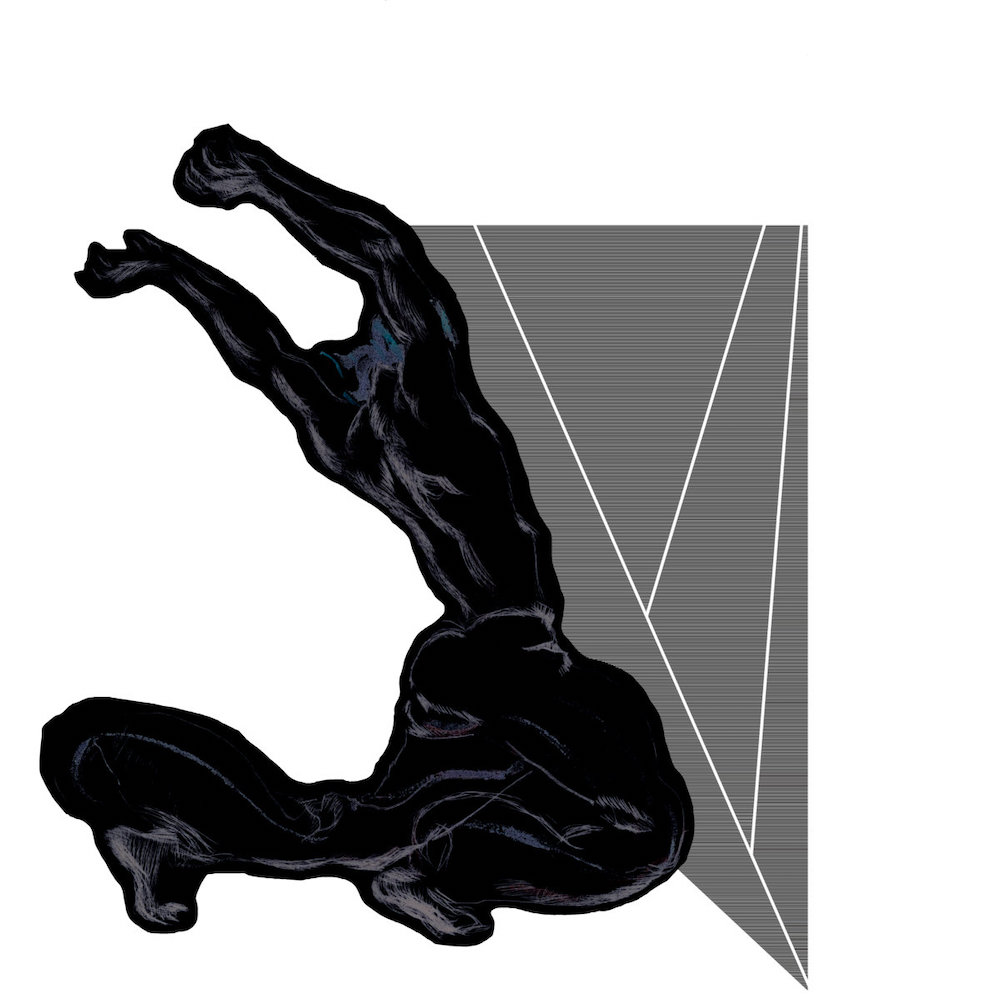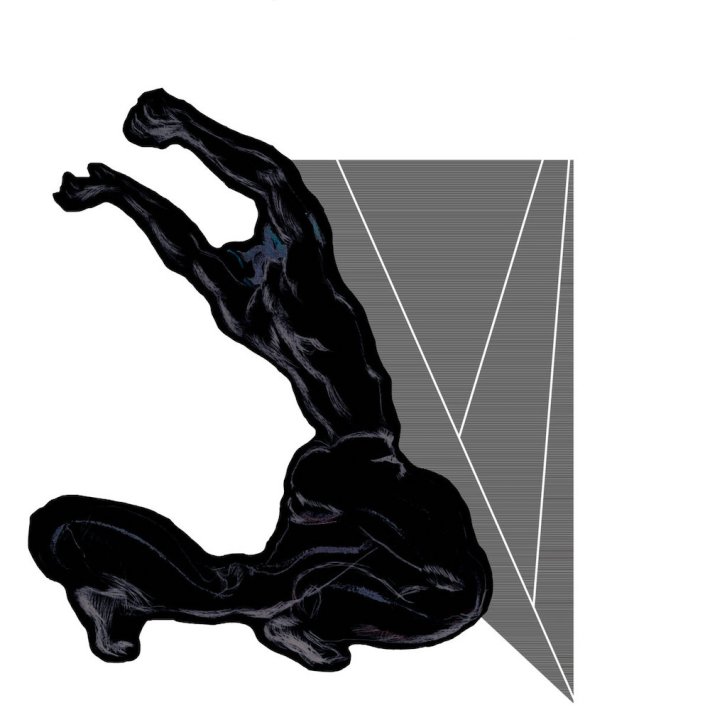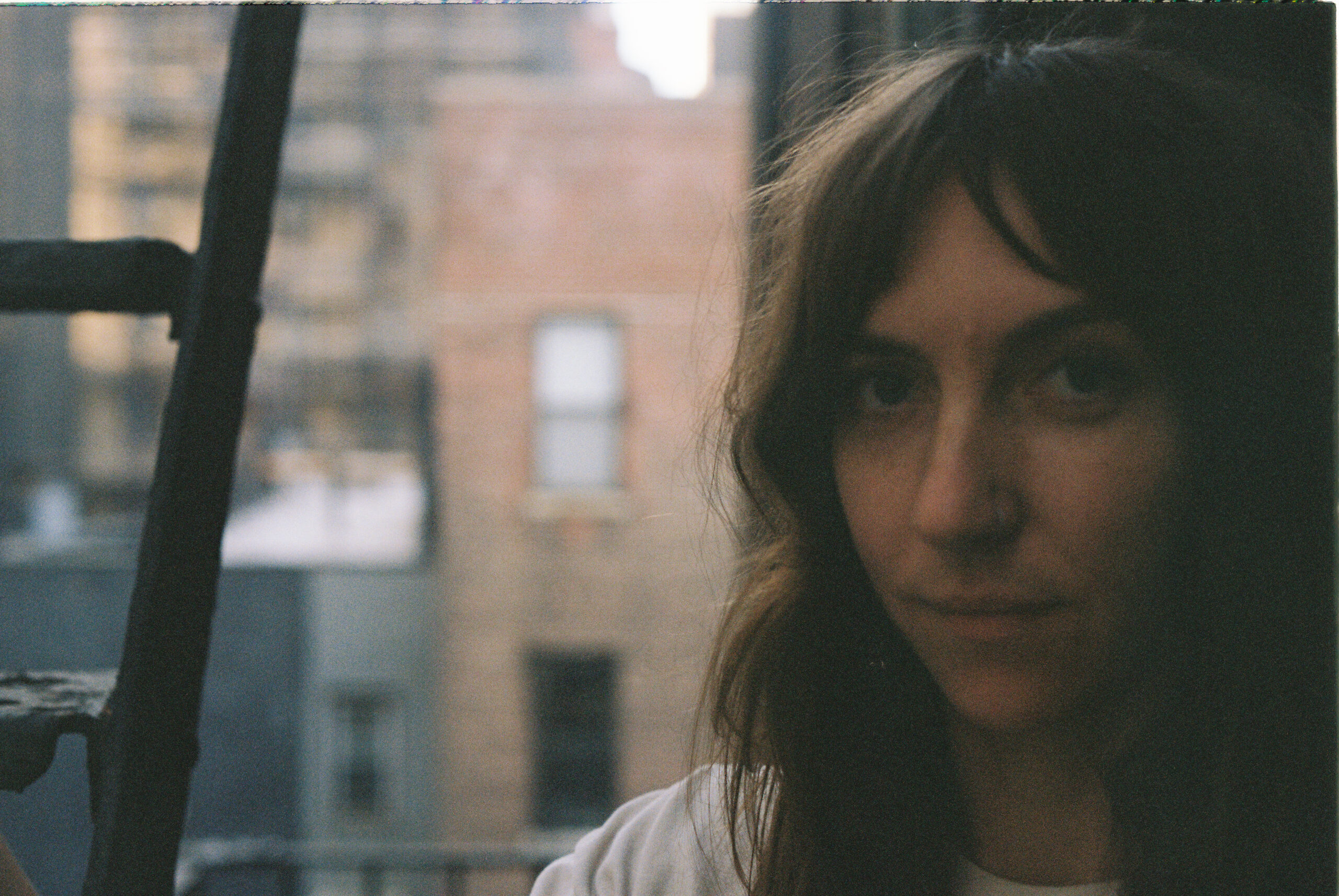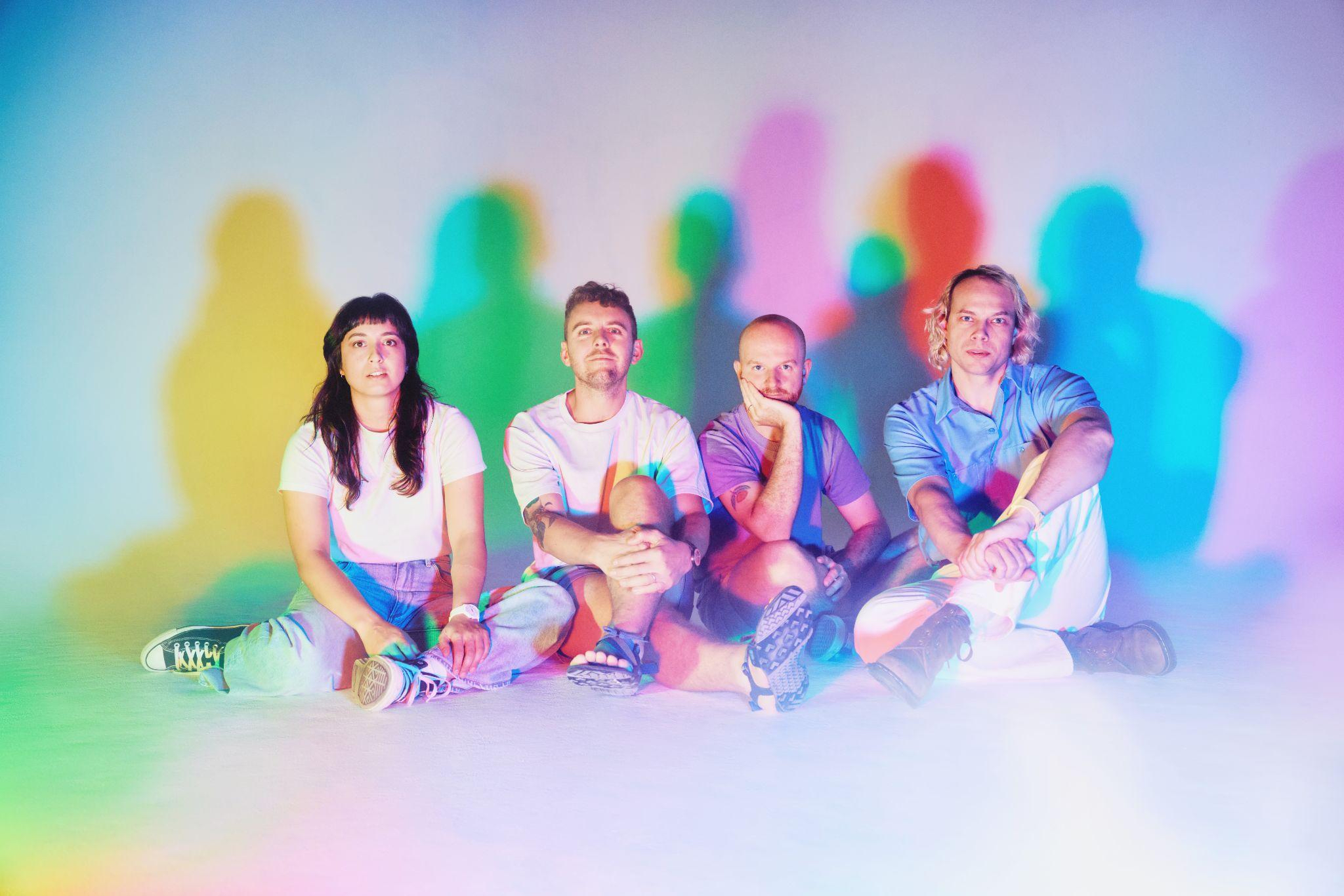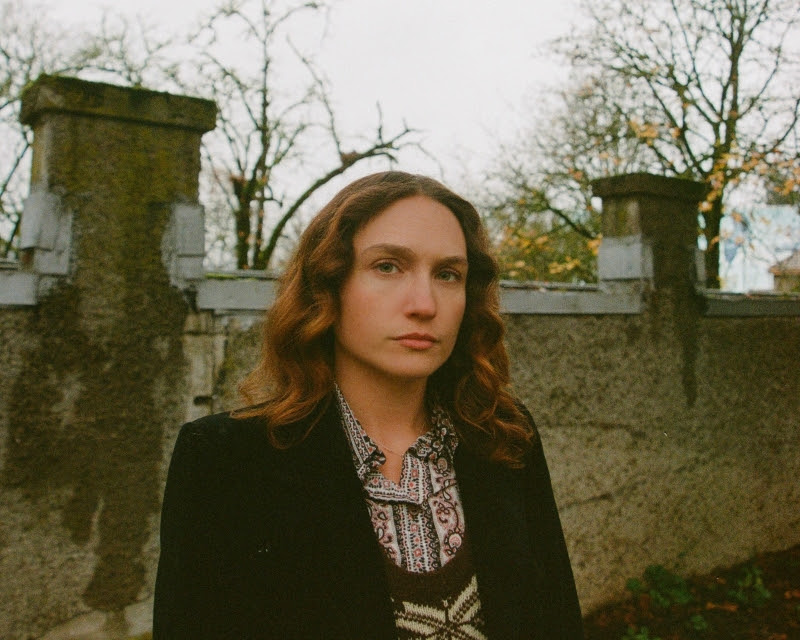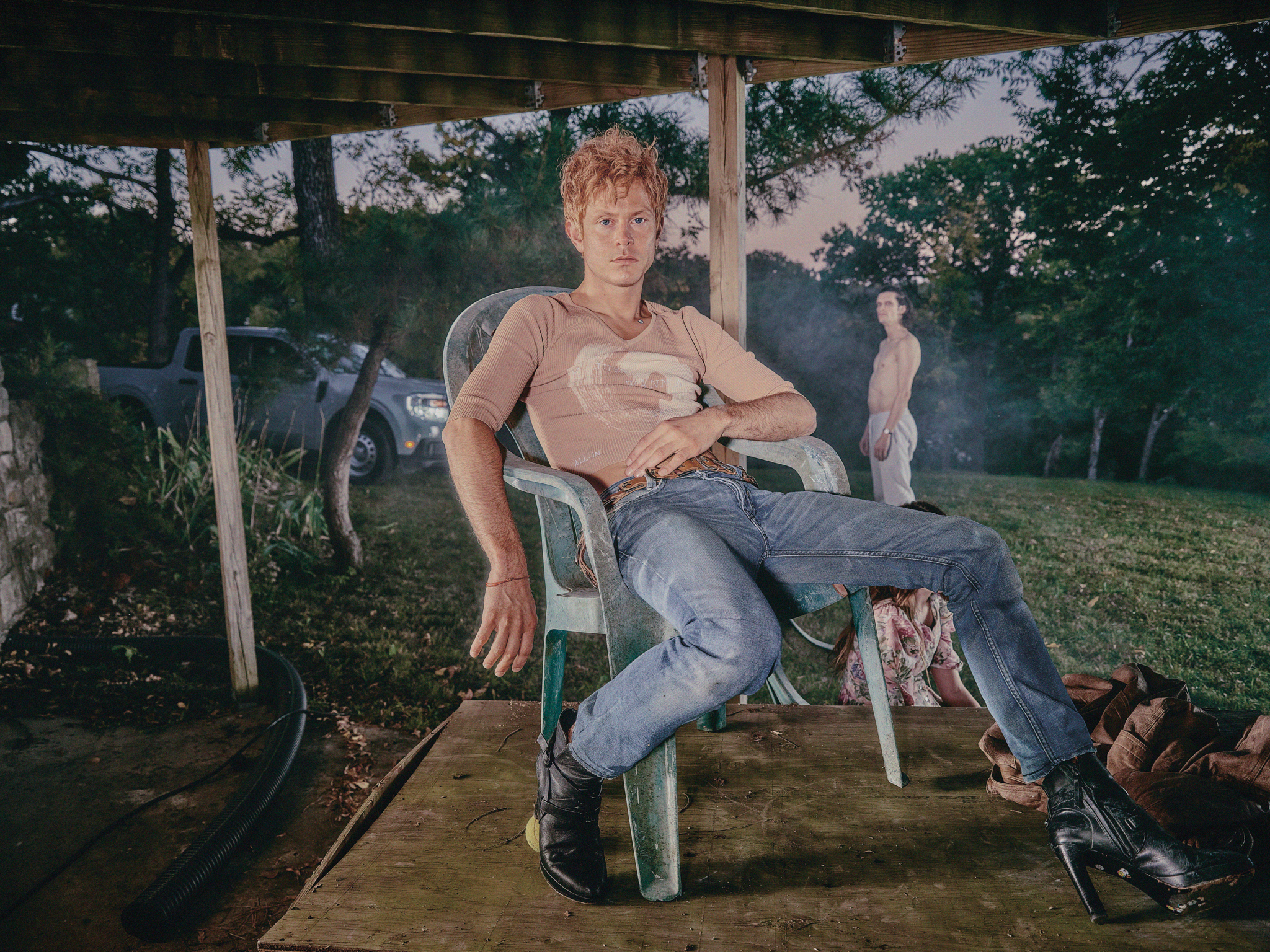The first time I heard "My Love's," I thought my computer sound card had busted. The second track on Water From Your Eyes' new album Structure is an abrasive sonic marvel, bursting into pummeling white noise and drill sounds that make you feel like you're about to get pulverized at the dentist. Despite that, or probably because of it, I can't stop listening. It's addictive and weird and delightfully mischievous, all adjectives that also sum up the album it's on, which is out today.
Structure comes from the madcap minds of Rachel Brown and Nate Amos, both of whom have other going concerns. Brown records music on their own as Thanks For Coming, often taking the shape of wiry and confessional bedroom rock. Amos has his own solo project, This Is Lorelai, and just launched a new band with Palberta's Lily Konigsberg and produced her upcoming solo album. Brown and Amos have been popping around the New York City scene for a while now, and the long string of music they've left in their wake speaks to their creatively restless spirits.
That's a quality that also bears out on Structure, which, true to its name, plays with the listener's expectations for how an album and song are supposed to traditionally act. It builds on the all-over-the-place nature of 2018's Somebody Else's Song -- alternately oppressive and light, never comfortable to stay in one place for very long. Throughout its 8 tracks, Water From Your Eyes jump from waterlogged '60s pop crooners to propulsive, jagged dance music to baroque, maudlin ballads to nonsensical spoken-word interludes.
"Structure is the first album we’ve ever been entirely happy with," Amos said. "We think it successfully captures the odd juxtaposition of seriousness and lightheartedness that’s always been at the core of Water From Your Eyes.The album consists of two matching halves, each being a 'movie' song, followed by a banger, followed by a spoken word piece, followed by a version of 'Quotations.' The whole Structure concept is a funny but functional working mechanism."
If that sounds dense and heady, well, it sort of is, but it's also dazzling and chaotic and fascinating in the best way. Structure is a closed-loop of ideas but within that loop it feels like there are endless possibilities. "The album itself when listening to it is not funny at all," Brown said. "It’s quite sad actually and a bit dissonant. Even though it ends on a more upbeat note, it’s not like that negates having sat through through the rest of the album. I feel like it encompasses so much space in so many weird complex ways that I don’t even understand."
"It’s playful in certain ways but in a dark enough arena that is doesn’t really translate as funny," Amos added. "There are little purposeful coincidences that you would have to pay attention to pick up on; there are little easter eggs and playful word things that offset the heaviness of the songs."
The pair provided us with a track-by-track breakdown of every song on Structure. Listen to the album and check it out below.
1. "When You’re Around"
RACHEL BROWN: This one just makes you want to cry doesn’t it?
NATE AMOS: "When You’re Around" is the first “movie” song on Structure. It was written for a karaoke scene that never came to fruition. (I probably would’ve written something else if it had because I like this song too much.) It was initially supposed to be a straightforward love song but it gradually twisted and developed a weird sea-sickness. Gets weirder under a microscope.
BROWN: "When You’re Around" is the only song I sing during our live performances without my sunglasses on. I look out above the audience and imagine I am singing to a hypothetical person, who I am hypothetically enamored with.
AMOS:I was really obsessed with the album Climate Of Hunter by Scott Walker -- still am -- and I think that had a lot to do with it. Light on the outside, spooky on the inside. It serves as sort of separate but thematically related scene to set the tone for the rest of the album.
BROWN: The writing of this song coincided with the end of our romantic relationship and co-habitation.Most of this album was written in the transition from relationship to friendship. This is the only song on the album that was fully written while we still lived together. We are now best friends and play sick music together.
2. "My Love’s"
AMOS: “My Love’s” is the first dip into the heavier side of Structure.
BROWN: It’s all bright lights and dark alleys if you know what I mean. Nate had written the music for the record before we convened to write the bulk of the lyrics.
AMOS: This was the first song we finished. It’s where the mask comes off! It’s a reworked version of a rightfully abandoned This Is Lorelei song from a 10-day period of time during which I was living in a hotel because my apartment building had mercury in it.
BROWN: It’s a scary, middle-of-the-night in-the-wrong-club banger.
AMOS: It starts off as a reference-less single note drone noise beat which gets twisted by goofy string plucks. The vocals change the mood significantly and the drop back into the noise is banging. Eventually the organ comes in and reframes everything as ultimately sorrowful.
BROWN: "My Love’s" is terrifying. I can’t remember the exact first time Nate showed me the instrumental but I can recall the feeling. I feel it every single time the song begins. It’s like the first drop of a rollercoaster with no clue how you got there.
3. "You’re The Embers"
AMOS: “You’re The Embers” is the first of two word puzzles containing lyrics from “Quotations.”
BROWN: One day I showed up to Nate’s apartment and was promptly instructed to read these words into a microphone.
AMOS: The goal was to have it make little enough sense that the words disappear and the voice becomes an instrument, functioning as a light-hearted and bizarre but necessary break between "My Love’s" and "Quotations."
BROWN: Nate’s a real neat guy, real neat ideas.
4. "Quotations"
AMOS: "Quotations" was initially inspired by a YouTube video of some giant machine. I don’t remember what. Started off with the beat and just kind of went from there.
BROWN: Honestly, it reminds me of The Lord Of The Rings for some reason. It’s fantastical and feels like a long journey to a fated destination.
AMOS: This song rips. It has quotation marks in the audio waveform itself.
BROWN: We actually named the song before Nate noticed them.
5. "Monday"
AMOS: Monday is the second “movie” song. I wrote it in my bed for a movie that doesn’t exist.
BROWN: He somehow captures the entire cinematic experience without ever having to write the script, much less produce it.
AMOS: This is where we can begin talking about the "structure" (haha) of the album, as this functions as side B’s reflection of "When You’re Around." This is my favorite song on the album, although it wasn’t originally intended to be on it.
6. "Track Five"
AMOS: "Track Five" just gooeeess, this song is for fast-forward days. It was written specifically to be played live, and I think the energy of our live performances actually comes through.
BROWN: I get really lost in this song when we perform. It’s so easy to get lost in. Someone once said it’s like dancing through the fallout of a nuclear power plant.
AMOS: This was the first song on the album to be conceived but not the first to be finished. It’s like a video game racing song, specifically Need For Speed circa 2000.
BROWN: Whenever I listen it, I think about how it feels to walk out of an apartment knowing it’s the last time you’ll ever see someone. The last time they’ll see you.
7. "You’re The Watching Fly"
AMOS: "You’re The Watching Fly" is the second half of "You’re The Embers," but functions as a slide into "“Quotations”" rather than a break between equally intense tracks.
8. ""Quotations""
AMOS: ""Quotations"" is an inverse version of "Quotations." The vocal melody and lyrics are the same but are reframed with a different backing track. It was the last track on the album to be put together.
BROWN: When we originally completed the rest of the songs, it felt as though the album ended too abruptly. Nate and I agreed that the melody of “Quotations” deserved another presentation given the aggressive nature of the first version. I suggested writing a song that encapsulates the sun shining in the morning time, as the rest of the album feels almost like a series of dreams or a long night out on the town.
AMOS: I spent a week putting together several versions, gave up on all of them, and cranked out this bad boy in like half an hour.
BROWN: It’s a much needed sense of relief and closure, bringing us back to the world of not listening to this album.
Structure is out now via Wharf Cat Records.
